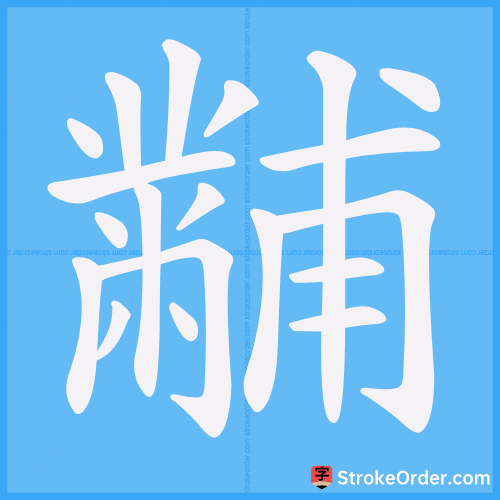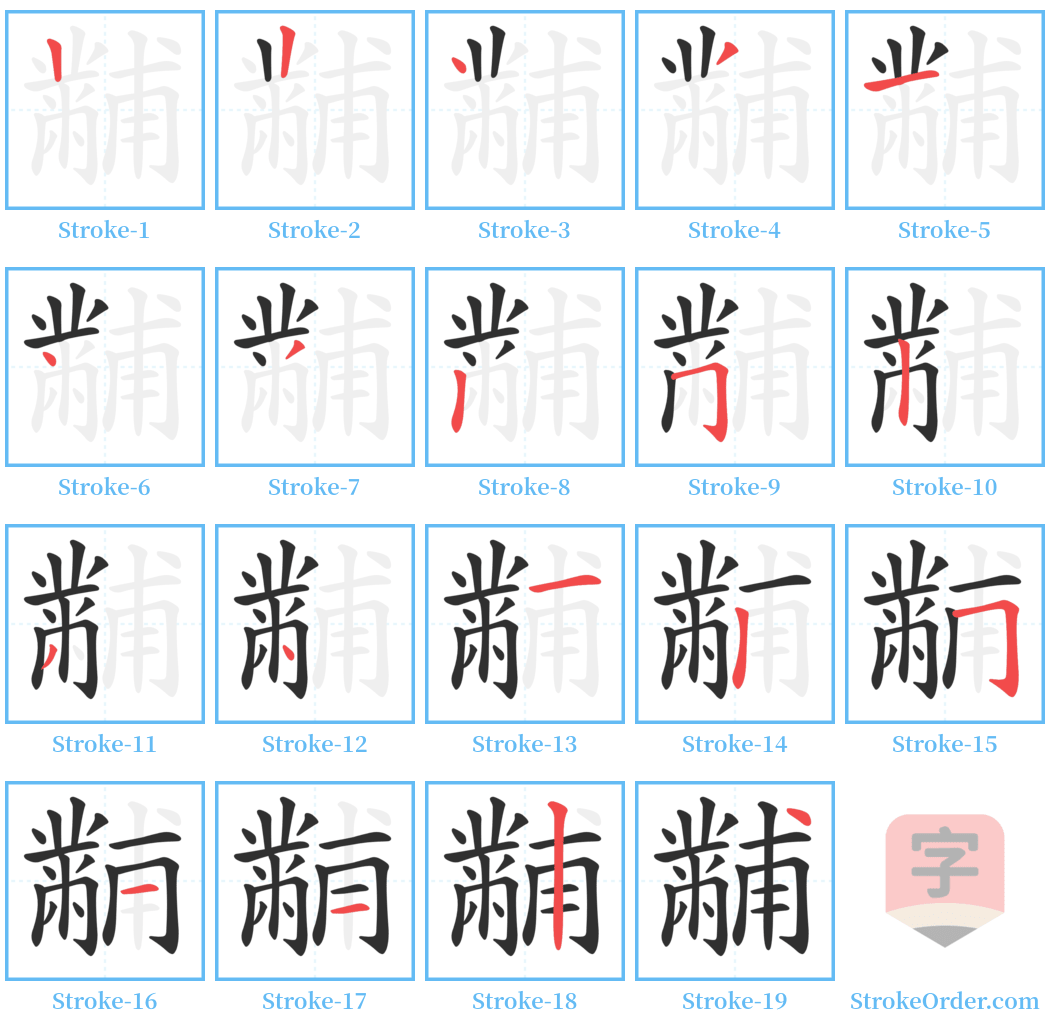黼 Stroke Order
Animated Stroke Order of 黼

Stroke Order Diagrams for 黼

Step-by-Step Handwriting Guide for 黼

Learn to Write Chinese Characters with Video Tutorials
Watch the video of writing the Chinese character "黼", learn the correct stroke order (笔顺) of the character "黼", and master the standard way of writing the character "黼".
Free Printable Handwriting Practice with Stroke Order: 黼
Printable Writing Practice Worksheet of "黼" in Portrait Orientation (Tian Zi Ge)

Printable Writing Practice Worksheet of "黼" in Landscape Orientation (Tian Zi Ge)

Information of 黼
Pinyin
fǔ
Radical
黹
Strokes
19 strokes
Usage
★★★★
Definition
(embroidery)
黼 [fǔ]
1. Ancient embroidered patterns on formal robes that are half black and half white.
2. Ancient embroidered patterns on formal robes:
- ~座 (Imperial throne)
- ~黻
a. Patterns embroidered on ancient robes
b. Metaphor for ornate language
- ~藻 (Refers to beautiful words)
【Definition】:
- The original meaning is the half black and half white embroidered patterns found on ancient ceremonial robes.
【Character Formation**】:
- The character is formed as a phono-semantic compound. It includes the component 黹 (zhǐ), which represents the overlapping lines of stitching, indicating a relationship with sewing or embroidery.
【Literary References**】:
1. "Shuo Wen": 黼, a pattern consisting of alternating black and white.
2. "Shi Jing · Xiao Ya · Cai Zhu": The black robe and the black-and-white patterns.
3. "Kao Gong Ji · Hua Huo Zhi Shi": Black and white is called 黼, black and green is called 黻.
4. "Shu · Yi Ji": The ancestral sacrificial fire, powdered rice and 黼黻.
5. "Zhou Li · Tian Guan · Dian Si": For all sacrifices, items with 黼 patterns are arranged.
【Examples**】:
- "Beautiful patterns are the embroidered designs of the ancient emperors’ robes." — "Han Shu · Jia Yi Zhuan"
Additional Literary Reference:
1. "Xunzi · Ai Gong": "Wearing 黼 robes and 黻 skirts, not partaking in meat."
Further Examples:
- 黼依 (A screen embroidered with axe patterns placed behind the emperor’s seat);
- 黼帷 (A canopy with axe-shaped patterns used by emperors);
- 黼绣 (Clothing embroidered with axe patterns). It can also metaphorically refer to ornate language, such as 黼黻 (patterns on ancient ceremonial robes, also used to describe elegant patterns and literary styles) and 黼藻 (referring to adorned and flowery language).